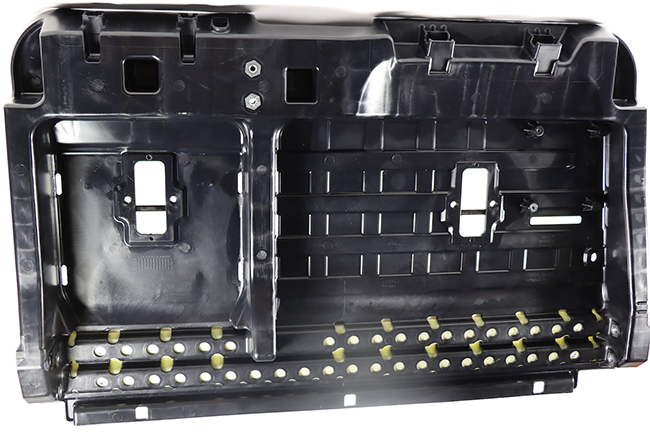A team effort by BASF, Flex-N-Gate, L&L Products, and Toyota reduced part count in the Toyota Tundra seatback from 60 stamped and welded parts to just four composite components.
August 4, 2022

Materials supplier BASF, design and engineering firm Flex-N-Gate, Toyota, and pultrusion specialist L&L Products have been awarded the prestigious Altair Enlighten Award for achievements in vehicle weight savings with the composite seatback design on the 2022 Toyota Tundra. This is the second time in three years that BASF, L&L Products, and Toyota have been recognized in the module lightweighting category.
“Pultrusion composite technology allowed us to design a seat structure that was 20% lighter compared to the previous model and to meet our cost goals,” said Vik Bhatia, Group Manager for Engineering Design Chassis at Toyota. “BASF, L&L Products, and Flex-N-Gate were great partners that helped us reach our targets.“
The seat structure is the first interior application for L&L Products’ Continuous Composite Systems (CCS) technology that uses BASF’s polyurethane pultrusion system Elastocoat 74850. CCS is a fiber-reinforced composite carrier with highly engineered sealants and adhesives in a two-dimensional profile. In this application it was overmolded with BASF's impact-modified polyamide 6 Ultramid B3ZG7 CR to create the 3D shape of the 60% seatback.
|
Pultrusion composite technology allowed design of a seat structure that is 20% lighter compared to the previous model, while achieving cost goals. |
“With this partnership, we were able to eliminate an all-steel assembly, which contained 60 stamped and welded parts, and integrate into four composite parts that reduced assembly and scrap costs associated with the metal seat structure," said Hank Richardson, Product Engineering Manager, L&L Products. “This also allowed for greater functionality of the seating system.”
“We continue to show how pultrusion can deliver lightweight, cost-effective solutions as well as integrated functionality,” said BASF’s Kipp Grumm, Technology Leader for Thermoplastic Composites, Performance Materials. “The unique design of the injection overmolded pultruded beam in the seat structure also passed all relevant crash test requirements and opens the door for more adoption of composites in automotive applications.”
About the Author(s)
You May Also Like





